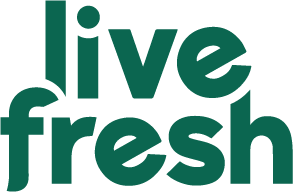Wenn es um Deine Gesundheit geht, spielt die Ernährung eine entscheidende Rolle. Eine purinarme Ernährung kann dabei helfen, bestimmte gesundheitliche Probleme zu lindern oder sogar zu vermeiden. Aber was genau bedeutet das? Eine purinarme Ernährung beinhaltet die gezielte Reduzierung von Purinen, welche in verschiedenen Lebensmitteln vorkommen. Durch die bewusste Wahl Deiner Nahrung kannst Du potenziellen Problemen wie Gicht oder Harnsäuresteinen vorbeugen, falls Du hierfür eine Veranlagung haben solltest. Es ist wichtig zu verstehen, wann und warum eine purinarme Ernährung bedeutend ist und wie sie Dir helfen kann, ein gesundes und aktives Leben zu führen.
Das Hauptziel einer purinarmen Kost ist es, den Gehalt an Purinen in Deiner Ernährung zu begrenzen. Dadurch wird die Produktion von Harnsäure im Körper reduziert. Dies kann dazu beitragen, Gicht zu verhindern oder zu verringern und das Risiko von Harnsäuresteinen zu mindern. Das betrifft vor allem diejenigen mit Vorerkrankungen oder Veranlagung.
Highlights
- Eine purinarme Ernährung hilft, Gicht und Harnsäuresteine zu vermeiden, indem sie den Harnsäurespiegel senkt.
- Purinreiche Lebensmittel wie rotes Fleisch, Meeresfrüchte und Alkohol sollten reduziert werden.
- Stattdessen empfehlen sich Obst, Gemüse und pflanzliche Proteinquellen.
- Eine gute Flüssigkeitszufuhr unterstützt den Körper zusätzlich.
Background knowledge on purines
What are purines?
Purines are organic compounds that occur naturally in the cells of plants and animals. Purines are involved in the Regulation of cell metabolismthe DNA synthesis, the energy metabolism and the signal transmission transmission. The nitrogenous compounds are broken down in the body and converted into uric acid.
Occurrence of purines in food
Purines are found in different quantities and in different foods. Animal products such as meat, offal (e.g. liver, kidneys), fish and seafood are particularly rich in purines. Plant sources of purines are, for example Pulses, spinach, asparagus and mushroomsbut they contain significantly less of these natural compounds than animal products. In addition, purine-rich foods can also be found in processed products such as ready meals, sausage products and certain sauces may be contained.
Diseases that can be affected by purines
Purines are not bad per se for the body, as they can also important functions and can, for example, ensure good satiety. They should therefore not be radically eliminated from the diet if there is no need for them. It is always necessary when the body has difficulties breaking down the nitrogen-containing compounds. and therefore diseases such as gout or urinary stonescan develop.
Gout
Gout is a painful inflammatory disease caused by an excessive accumulation of uric acid. Uric acid is the end product of purine metabolism. Gout can lead to an increased uric acid level in the blood, resulting in the formation of uric acid crystals in the joints. This can lead to acute attacks of gout with severe pain, redness, swelling and limited mobility of the affected joints.
Purines play a central role in the development of gout, as uric acid is produced during its breakdown. An excessive intake of purine-rich foods can increase the uric acid level in the blood and thus increase the risk of gout attacks. By reducing purine-rich foods, uric acid levels can be lowered and the occurrence of gout attacks reduced.
Uric acid stones
Uric acid stones are crystals that form in the kidneys and can lead to kidney stones. They form when the uric acid level in the urine is too high and uric acid crystals form. The formation of uric acid stones can lead to symptoms such as severe kidney pain, frequent urination, hematuria (blood in the urine) and urinary tract infections.
A high intake of purine-rich foods can lead to increased uric acid levels in the urine and thus increase the risk of uric acid stones forming. By reducing purine-rich foods, the uric acid level in the urine can be lowered, thus reducing the risk of uric acid stones forming.
It is important to note that individual sensitivity to purines and the tendency to develop gout or uric acid stones can vary from person to person and not everyone must and should eat a low-purine diet.
Basic principles of a low-purine diet
The first basic principle of a low-purine diet is to avoid purine-rich foods or at least consume them in moderation.
- Meatespecially certain types such as beef, pork and game, contains high amounts of purines. Offal such as liver, kidneys and heart are also very high in purines. To maintain a low-purine diet, it is advisable to reduce your consumption of red meat and offal. Instead, you can give preference to lean varieties such as chicken or turkey.
- Seafood such as sardines, mussels, oysters and crustaceans are rich in purines. Some types of fish such as herring, mackerel and anchovies also have a high purine content. If you want to stick to a low-purine diet, you should limit your consumption of seafood and certain types of fish. Instead, you can opt for fish such as salmon or trout.
- Pulses such as lentils, peas, beans and chickpeas are rich in vegetable protein, but they also contain a certain amount of purine. If you suffer from gout or uric acid stones or want to follow a low-purine diet, you should limit your consumption of pulses. Alternatively, you can turn to other protein-rich plant sources such as tofu, tempeh or quinoa.
- Alcohol and caffeinated drinks such as coffee, tea and certain soft drinks can raise uric acid levels and increase the risk of gout attacks. It is therefore advisable to reduce or avoid the consumption of alcohol and caffeinated drinks. Instead, you can opt for non-alcoholic drinks such as water, herbal tea or decaffeinated coffee.
- Drinking habits and fluid intake: Adequate fluid intake is also important when following a low-purine diet. Water is the best choice to keep the body hydrated and promote uric acid removal. It is recommended to drink at least 8 glasses of water a day to support kidney function and regulate uric acid levels in the body. Alcohol and caffeinated drinks, on the other hand, should be reduced or avoided as they can increase uric acid levels.
- A balanced diet: A low-purine diet should not be too one-sided, but should include a balanced diet. Make sure you eat plenty of fresh fruit and vegetables. Wholemeal products, cheese, quark and healthy fats such as olive oil or avocado should also be integrated into the diet. A balanced diet with an appropriate nutrient content will help to keep you healthy and support overall metabolic function.
The vegan diet can offer you many advantages here. On our blog and our Instagram channel you will find a variety of delicious and healthy recipes. You can get an overview of low-purine foods here: Low-purine foods.
Low purine recipes
To give you some ideas of what you can eat with low-purine ingredients, we have compiled the best low-purine recipes for you. recipes summarized:
- Breakfast recipes: The first meal of the day goes very well with Keto pancakes or a delicious apple-cinnamon porridgeto start. If you're short on time, then this Low carb protein porridge from LiveFresh is ideal for starting the day with little purines and lots of energy. You can choose between three delicious varieties and have a healthy change every day without much preparation.
- Light soups & stewsThese recipes are easy to prepare, low in calories and varied. The soups and stews are not only easy to digest and quick to cook, but also contain few purines. Why not try our vegan carrot orange ginger soup or our vegan pumpkin and carrot potato soup.
- Vegetarian and vegan dishesOur vegetarian and vegan dishes : Colorful salads or delicious recipes for pan-fried and baked vegetables are perfect for a low-calorie dinner to lose weight. Why not try our healthy stuffed bell pepper halves. Our oven-baked Brussels sprouts with cauliflower rice recipe is the perfect alternative to conventional, carbohydrate-rich rice. And thanks to our vegan pumpkin fries you don't have to miss out on anything, even when losing weight.
- Healthy bowls: LiveFresh offers vegan bowls in many different flavors - with a focus on low carb and high protein. These dishes create the ideal basis for losing weight and can be prepared in just a few minutes. Want to try a recipe for yourself? Then try our healthy Buddha Bowl.
- Alternatives to classic bread & toastBread and toast do not contain purines, but should be avoided when losing weight. Instead, try our Avocado toast made from sweet potatoes or make yourself some delicious and healthy wraps. We also have the right low carb wrap recipes for you.
Which foods are particularly high in purine and should be avoided?
Purine-rich foods that should be limited or avoided in a low-purine diet include meat (especially offal such as liver and kidneys), seafood, certain types of fish, pulses and alcoholic drinks.
Which foods are good alternatives in a low-purine diet?
There are many foods that can be preferred in a low-purine diet. These include fruit, vegetables, wholegrain products, dairy products, eggs, nuts and seeds. These provide important nutrients and are generally low in purines.
How can I increase my fluid intake in a low-purine diet?
To increase your fluid intake on a low-purine diet, you should focus primarily on water. Drink at least 8 glasses of water a day. Avoid or reduce the consumption of alcoholic beverages and caffeinated drinks such as coffee or tea, as they can increase uric acid levels.
How can I plan my meals correctly in order to follow a low-purine diet?
When planning meals for a low-purine diet, it is important to make a balanced selection of foods. Incorporate fruits, vegetables, whole grains and high protein, low purine sources such as lean meats, dairy products or plant-based proteins. Also pay attention to portion sizes to avoid an excessive intake of purines.
Das könnte dich auch interessieren

Dr. Ulrike Fischer
Nutritionist
Developed on a scientific basis by Dr. Ulrike Fischer, who holds a doctorate in nutritional science.
Wenn es um Deine Gesundheit geht, spielt die Ernährung eine entscheidende Rolle. Eine purinarme Ernährung kann dabei helfen, bestimmte gesundheitliche Probleme zu lindern oder sogar zu vermeiden. Aber was genau bedeutet das? Eine purinarme Ernährung beinhaltet die gezielte Reduzierung von Purinen, welche in verschiedenen Lebensmitteln vorkommen. Durch die bewusste Wahl Deiner Nahrung kannst Du potenziellen Problemen wie Gicht oder Harnsäuresteinen vorbeugen, falls Du hierfür eine Veranlagung haben solltest. Es ist wichtig zu verstehen, wann und warum eine purinarme Ernährung bedeutend ist und wie sie Dir helfen kann, ein gesundes und aktives Leben zu führen.
Das Hauptziel einer purinarmen Kost ist es, den Gehalt an Purinen in Deiner Ernährung zu begrenzen. Dadurch wird die Produktion von Harnsäure im Körper reduziert. Dies kann dazu beitragen, Gicht zu verhindern oder zu verringern und das Risiko von Harnsäuresteinen zu mindern. Das betrifft vor allem diejenigen mit Vorerkrankungen oder Veranlagung.
Highlights
- Eine purinarme Ernährung hilft, Gicht und Harnsäuresteine zu vermeiden, indem sie den Harnsäurespiegel senkt.
- Purinreiche Lebensmittel wie rotes Fleisch, Meeresfrüchte und Alkohol sollten reduziert werden.
- Stattdessen empfehlen sich Obst, Gemüse und pflanzliche Proteinquellen.
- Eine gute Flüssigkeitszufuhr unterstützt den Körper zusätzlich.
Inhalt







